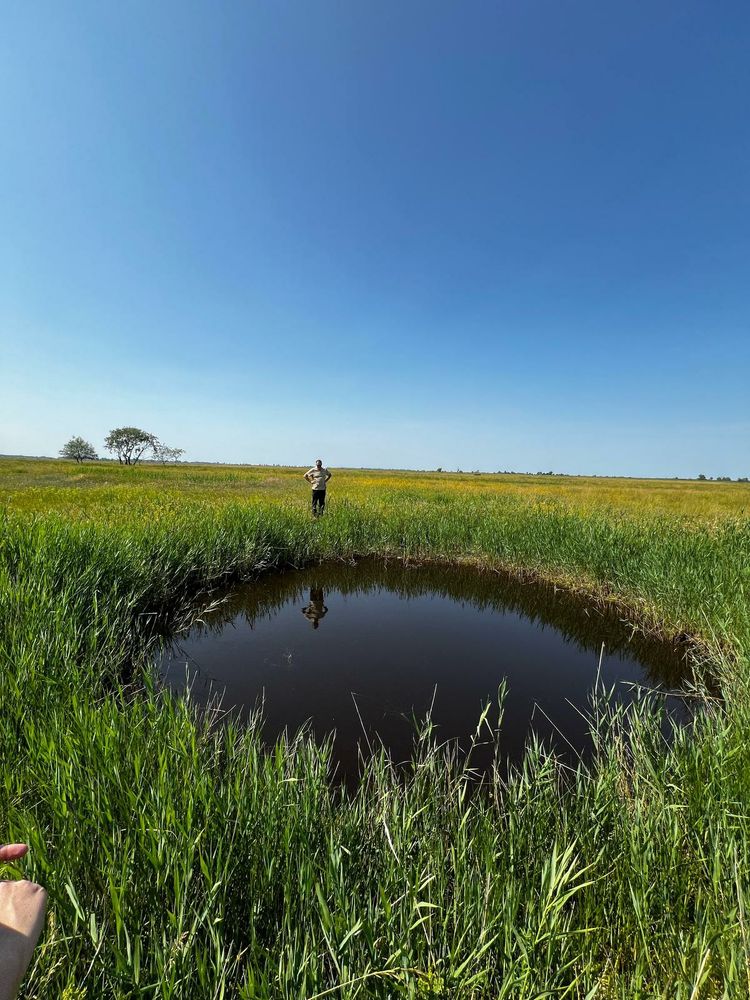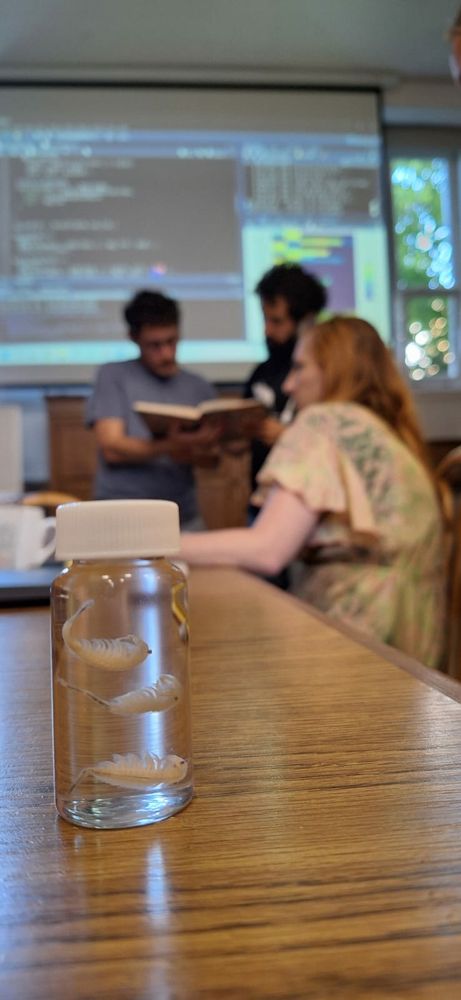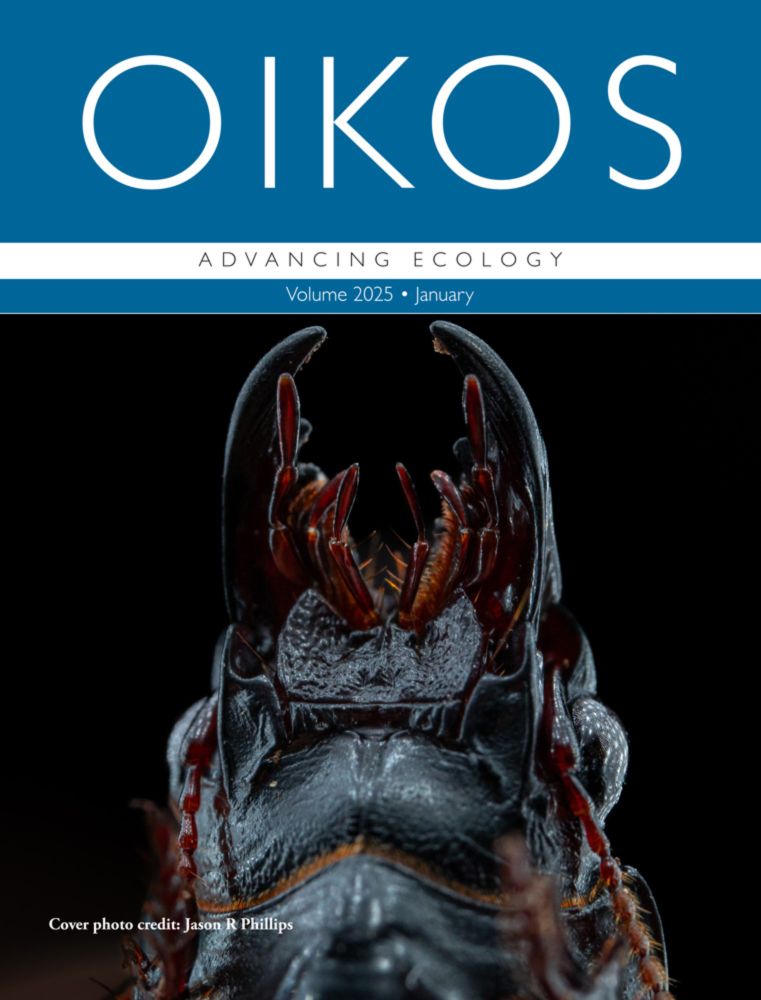
📢for abstracts! Join us on the joint ASLO-SIL26 Confluence: Science, People, Knowledge Meeting / @majailiczg.bsky.social, @zsofiahorvath.bsky.social and I organize session 78 "Urban waters under pressure: socio-ecological feedback and anthropogenic stressors in city ponds, streams, and estuaries"
24.10.2025 11:42 — 👍 5 🔁 4 💬 0 📌 0

SS082 Mesocosm-based approaches for tackling grand challenges in aquatic ecosystems
With @aquacosm-ecr.bsky.social members Cihelio Alves Amorim, Anna Schmidt, Gabriela Ágreda-López and Gülce Yalcin
20.10.2025 09:50 — 👍 5 🔁 3 💬 1 📌 0
@epcn.bsky.social
20.10.2025 09:50 — 👍 3 🔁 1 💬 0 📌 0
Abstract submission for ASLO-SIL 2026 in Montreal is open!
Together with several colleagues, I will be co-hosting three sessions. For more information, please see below (each session mentioned in the comments).
Session list (with session descriptions):
www.aslo.org/aslo-sil-202...
20.10.2025 09:40 — 👍 3 🔁 1 💬 1 📌 0

EPCN Mountain Ponds Working Group
We are planning to bring a new mountain ponds working group to life within the network of the EPCN (European Pond Conservation Network). For this purpose, we call a meeting for all people that are int...
(Mountain) Pond lovers, we are looking for you! Within the EPCN, we are organising a new working group on mountain ponds 💙🏔️ If you are interested to join or listen to the presentations, join our kick-off meeting on 29th of October!
docs.google.com/forms/d/e/1F...
06.10.2025 09:04 — 👍 7 🔁 5 💬 0 📌 0
That would be amazing!
24.09.2025 21:21 — 👍 0 🔁 0 💬 1 📌 0
I will of course ensure the dataset is fully cited and appropriately acknowledged! 🦄
21.09.2025 18:21 — 👍 0 🔁 0 💬 0 📌 0
...and it is extremely difficult to find.
I would be extremely happy for any pointers, suggestions...
Please let me know if you hold or are aware of such data!
It can be grasslands, corals, insects, fish, unicorns... 🔭🐸🦐🌳
21.09.2025 18:20 — 👍 0 🔁 0 💬 2 📌 0
With Mathew Leibold and colleagues from IGB Berlin, we are currently working on a perspectives article where we aim to make a case for applying metacommunity ecology in restoration measures, drawing on existing case studies of connectivity restoration. But for this, we really need some data...
21.09.2025 18:14 — 👍 5 🔁 0 💬 2 📌 0
Looking for openly available:
- before-after data in space
- with a restoration measure inbetween (e.g. dam/invasive spec. removal, urban green space creation...)
- min. 10 sites (quadrats / random places along a stream / ponds...)
- species data, env. data of some sort, GPS coordinates
21.09.2025 18:10 — 👍 7 🔁 11 💬 1 📌 0

I’m offering a free online crash course in scientific writing and publishing. Here’s how to join!
The world of scientific writing and pubilshing is complex and confusing, and it can be hard for early career scientists to master. But don’t worry! I am an experienced and award-winning scien…
ICYMI: I am offering a free online 2-hour crash course in how to write and publish a scientific paper, perfect for students and early career researchers about to write their first paper.
The world of scientific writing and publishing can be confusing, but I'm here to help!
🧪🌎🦑
29.08.2025 13:37 — 👍 51 🔁 42 💬 3 📌 0

Welcome Zsófia Horváth - New SE | Oikos Journal
Welcome Zsófia Horváth - New SE | Oikos Journal
🥳 Meet Dr. Zsófia Horváth @zsofiahorvath.bsky.social , our new subject editor from Budapest, Hungary
Get to know her and her research by reading her interview here: vist.ly/44s89
27.08.2025 17:06 — 👍 16 🔁 3 💬 2 📌 0
If you would like to join our mailing list, please also drop us a message and your contact info and we'll make sure to add you, so you receive future EPCN news! 💙
25.03.2025 11:22 — 👍 0 🔁 1 💬 0 📌 0

it was great to meet all the pond friends!!
@carlaulmusminor.bsky.social @stephi-gascon.bsky.social @zsofiahorvath.bsky.social, Marga Florencio and many more!
03.06.2025 14:24 — 👍 7 🔁 2 💬 1 📌 1
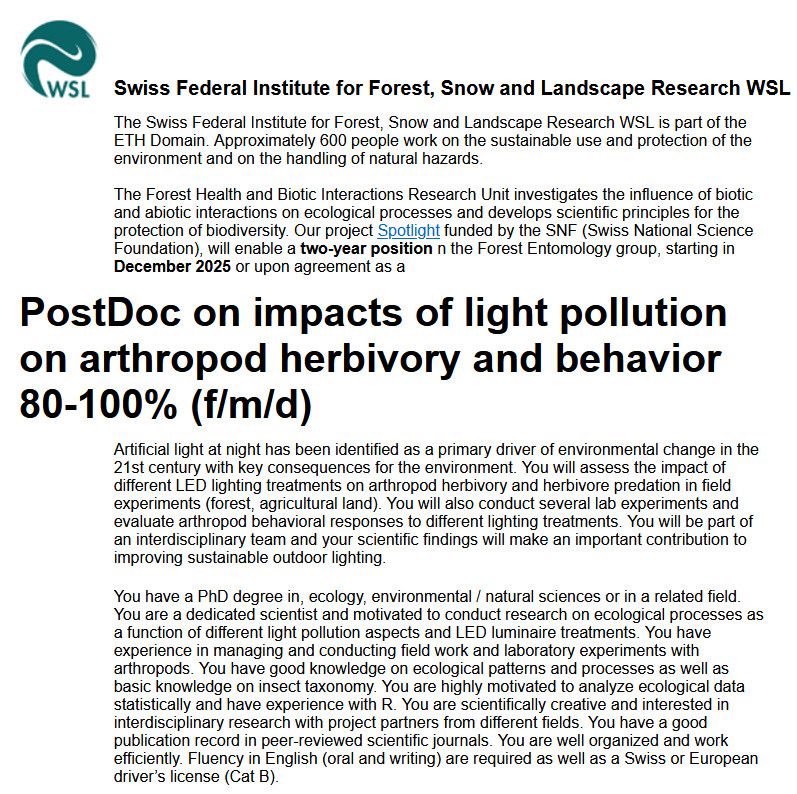
The Forest Health and Biotic Interactions Research Unit investigates the influence of biotic and abiotic interactions on ecological processes and develops scientific principles for the protection of biodiversity. Our project Spotlight funded by the SNF (Swiss National Science Foundation), will enable a two-year position n the Forest Entomology group, starting in December 2025 or upon agreement as a
PostDoc on impacts of light pollution on arthropod herbivory and behavior 80-100% (f/m/d)
Artificial light at night has been identified as a primary driver of environmental change in the 21st century with key consequences for the environment. You will assess the impact of different LED lighting treatments on arthropod herbivory and herbivore predation in field experiments (forest, agricultural land). You will also conduct several lab experiments and evaluate arthropod behavioral responses to different lighting treatments. You will be part of an interdisciplinary team and your scientific findings will make an important contribution to improving sustainable outdoor lighting.
You have a PhD degree in, ecology, environmental / natural sciences or in a related field. You are a dedicated scientist and motivated to conduct research on ecological processes as a function of different light pollution aspects and LED luminaire treatments. You have experience in managing and conducting field work and laboratory experiments with arthropods. You have good knowledge on ecological patterns and processes as well as basic knowledge on insect taxonomy. You are highly motivated to analyze ecological data statistically and have experience with R. You are scientifically creative and interested in interdisciplinary research with project partners from different fields. You have a good publication record in peer-reviewed scientific journals. You are well organized and work efficiently. Fluency in English (oral and writing) are required as well as a Swiss or European driver’s license (Cat B).
🐜🥼#PostDoc Alert! PhD in #natural #sciences, experience with #arthropod #fieldwork and #lab as well as a good #publication record?📚Knowledge of #ecological processes, #insect #taxonomy & R? Our #Forest #Entomology group is offering a two-year PostDoc position. apply.refline.ch/273855/1720/...
25.03.2025 07:38 — 👍 17 🔁 11 💬 0 📌 0
Sure! :) You are added!
24.03.2025 12:06 — 👍 1 🔁 0 💬 0 📌 0
Calling all aquatic ecologists 📣!
This is the event for you! Come along to London in September to join our special microbe themed annual conference. Tickets are on sale now!
@bes-aquaticgroup.bsky.social
@bes-microbialgroup.bsky.social
@britishecologicalsociety.org
23.03.2025 08:52 — 👍 6 🔁 3 💬 0 📌 0
EPCN - the European Pond Conservation Network just arrived to Bluesky!
@epcn.bsky.social
You can now also find them along with several pond researchers in the Pond Ecology starter pack!
go.bsky.app/4xGTu74
Let me know if I missed you and you would like to be included in it! 🐸🐟🐚🦠🪷
12.03.2025 08:55 — 👍 14 🔁 9 💬 4 📌 0

Are you interested in field work and data science? We're looking for a PhD student interested in data-driven analysis of non-linearity in lake ecosystems to begin September 2025.
Please share far and wide, and contact Robert for any questions!
Here's the official description: lnkd.in/dzTwudQz
30.01.2025 10:09 — 👍 14 🔁 9 💬 0 📌 1
5th International Conference on Community Ecology / ComEc5
3-5 Sept 2025: 5th International Conference on Community Ecology is coming to Budapest, Hungary!
www.akcongress.com/comec/
19.02.2025 20:50 — 👍 12 🔁 5 💬 0 📌 0

Support for trophic links between different families of waterbirds and four groups of large branchiopods. a Trophic relationships between waterbird families and large branchiopod groups in literature. The thickness of the connecting line is proportional to the number of studies supporting evidence for a trophic link. Both large branchiopod and waterbird diversity (n = number of species) are denoted below their corresponding group icon. For all families depicted, direct evidence of branchiopod consumption was found with the exception of spoonbills (Threskiornithidae), for which only indirect (prey availability) evidence was found (transparent). b Quantitative measures of large branchiopod consumption by waterbirds from gastrointestinal studies. Percentages of bird samples containing the large branchiopod group (occurrence) and percentages of volume of gastrointestinal bird samples aggregate that consist of large branchiopods (volume) are depicted where available (tr < 1%, traces). Percentages were weighted according to the number of samples (n) across the number of studies (N) and weighted standard errors are depicted as error bars where applicable.
Waterbirds have fascinating ecological interactions with brine shrimps, fairy shrimps and other large branchiopods, nicely documented in this new review @zsofiahorvath.bsky.social @aillimnologia.bsky.social @sil-limnology.bsky.social @freshwaterscience.bsky.social link.springer.com/article/10.1...
14.02.2025 11:13 — 👍 3 🔁 4 💬 0 📌 0
On the International Day of Women and Girls in Science:
I am proud & grateful to work with all these smart, dedicated, inspired and enthusiastic women in my lab!
@schneiderbea.bsky.social @hhuong152.bsky.social @zsuzsimrton.bsky.social @bartabarbara.bsky.social
& others not on Bsky
11.02.2025 22:37 — 👍 12 🔁 1 💬 0 📌 1

Happy International Women & Girls in Science Day 2025
#WomenInScience #womeninSTEM #IDWGS
11.02.2025 07:46 — 👍 156 🔁 75 💬 2 📌 2
We are seeking a Postdoctoral Researcher (PDRA) in Freshwater Ecosystem Ecology researching the role of organic matter as a nutrient resource in freshwater ecosystems. A 4.5 year role with great training opportunites in isotope ecology and mesocosm experimental science www.jobs.ac.uk/job/DLU610/p...
11.02.2025 19:36 — 👍 38 🔁 44 💬 1 📌 0
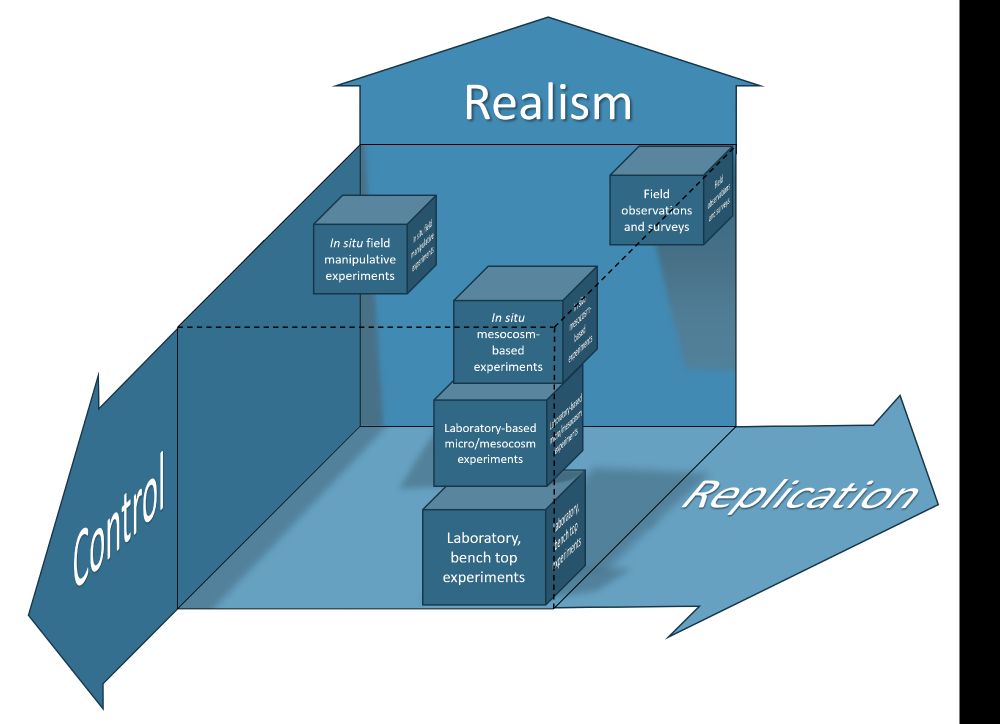
Conceptual diagram representing an empirical domain space for ecological research constrained by scales of realism, replication and control. The relative placement of different approaches to empirical research represented by the cubes within the three-dimensional space illustrates the advantages and disadvantages of each approach, with the advantages of micro/mesocosm-based approaches in balancing and extending these three dimensions (scales) illustrated by the positioning of these cubes towards the upper corner nearest the viewpoint.
Specific study designs and experimental systems using the approaches pictured will vary considerably and influence the positioning of any one study within this space. The approach taken and experimental design used to address a particular research question will be informed by the ecological and biological variables of interest, factors manipulated, responses measured and desired application of the findings. The positioning of the cubes here is intended to illustrate the general tradeoffs within these key three scales relative to other approaches.
2/Mesocosms have mostly been used to quantify impacts of environmental threats, but there's largely untapped potential in using them to test solutions!
We explore the opportunities that mesocosms offer in providing controlled, realistic and replicable environments for investigating novel solutions.
11.02.2025 18:15 — 👍 6 🔁 3 💬 1 📌 0
PhD student @University of Innsbruck | Alpine Rivers, Periphyton & Fatty Acids
Assistant Prof @VUB | Aquatic evolutionary ecologist, bDIV 📍Brussels | Researching eco-evolutionary resilience & societal feedbacks in urban freshwater ecosystems | #EvolutionInTheAnthropocene
Microbiologist, MSc. Environmental sciences. Ph.D. candidate at Cristescu Lab in
@biomcgill.bsky.social
eDNA, eRNA, Bioaerosols
National UK wildlife conservation charity dedicated to reversing the decline in freshwater biodiversity.
www.freshwaterhabitats.org.uk
Aquatic ecologist 💦🍃🍂- Postdoctoral researcher at @ub.edu
#GHG #Freshwater #Biogeochemistry #Urban #Ponds
Science-led NGO restoring & conserving Norfolk's ponds. Pioneers of #ghostpond resurrection & farm pond restoration. Crucian carp, eels, stoneworts, birds, bats, pollinators. Come yew orn: www.norfolkponds.org
PhD in community ecology of temporary rivers. FEHMLab.
University of Barcelona.
Coordinator of Young AIL researchers (Iberian Association of Limnology).
PhD student Mayfield Lab, UniMelb. Community ecology, spatial stuff, networks and lots of small plants.
Organiser @pop-bio.bsky.social
she/her
I am an environmental scientist and JSPS fellow working in Matsue, Japan. I investigate the ecology and impacts of climate change on freshwater ecosystems, including lakes, rock-holes and groundwater.
My website: https://brockhedges.wordpress.com/
Professor at the University of Innsbruck. Limnology| Microbial Ecology|Biogeochemistry|Photobiology
Postdoctoral researcher 🙋🏻♂️ || Ecology and biodiversity 🐟🪲🐜 || Open to collaborate on any research topic 💡
http://www.ignasiarranz.com
Assistant Professor at University of Toulouse, Ecole d'ingénieurs de Purpan. Soil ecologist interested in the impact of global change on biodiversity and functions.
Microbial data enthusiast @ Koonkie.com | Wind and wave seeker
Joint BSBI and BBS recorder for Hertfordshire.
🌱Celebrating the joy of Botany and Bryology.
❤️Aquatic plants & many other. Scarce Tufted-sedge. Plant ecology. Rivers, ponds & lakes.
Evolutionary ecologist: zooplankton, omics and time travel
eDNA/eRNA, metatranscriptomics | fish farm impacts, marine fish biodiversity, freshwater eukaryote gene expression
he/him
M.S., University of Maine
PhD Student, University of Alabama
Community ecology,macro-invertebrates, subsidies, fly fishing
Freshwater ecology, global change, nature conservation; env policy; Dep Chair @natreswales.bsky.social; Joint Committee @jncc.bsky.social; VP @rspb.bsky.social; bumbling acoustic guitarist
https://profiles.cardiff.ac.uk/staff/ormerod
EUPHORIA - European Plant Phenology Research in Aquatic Systems
European Fresh and Young Researchers (EFYR) - European Federation for Freshwater Sciences (EFFS)
A committee of fresh and young people supporting early-career scientists and professionals in fresh waters across Europe






